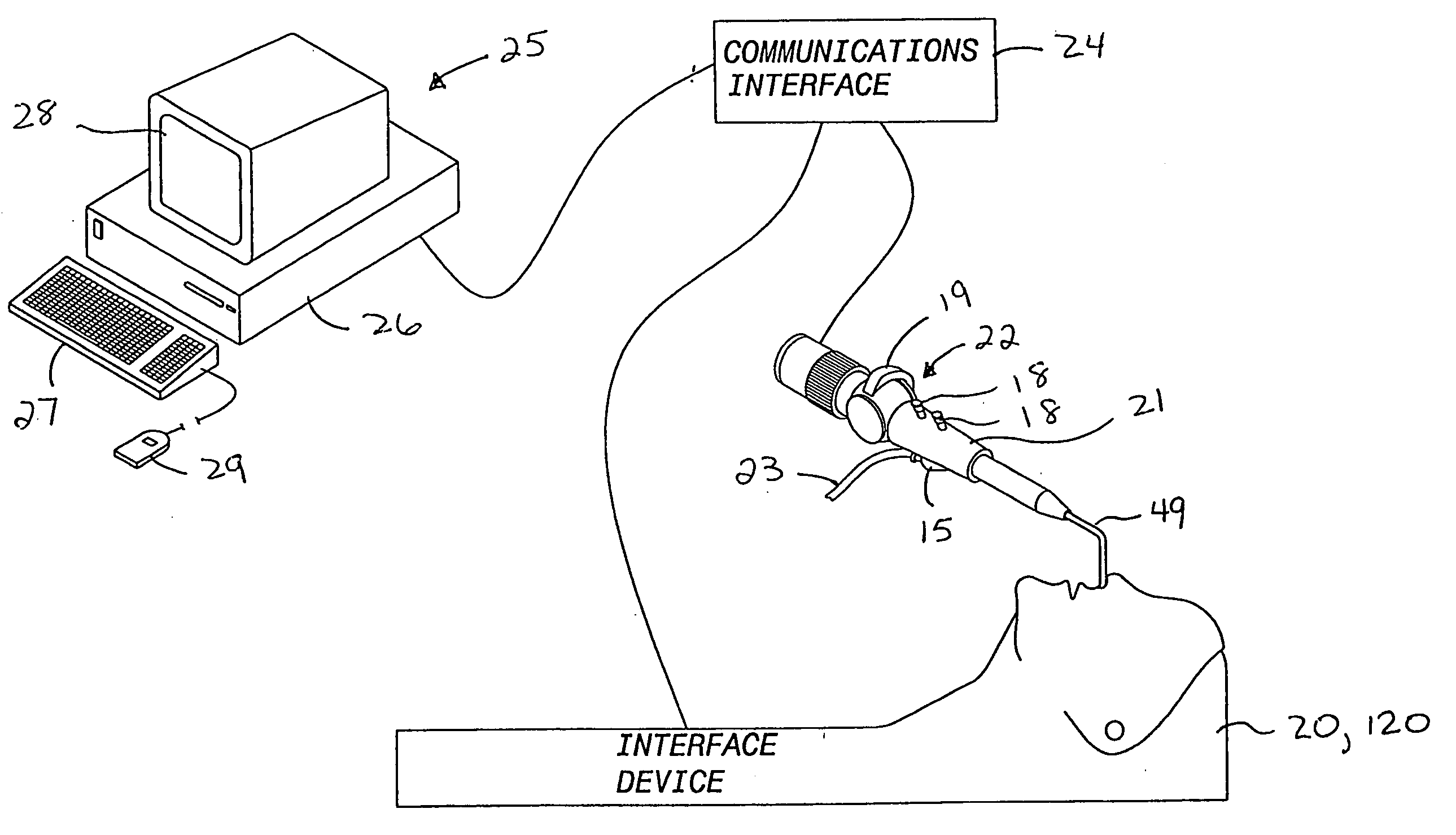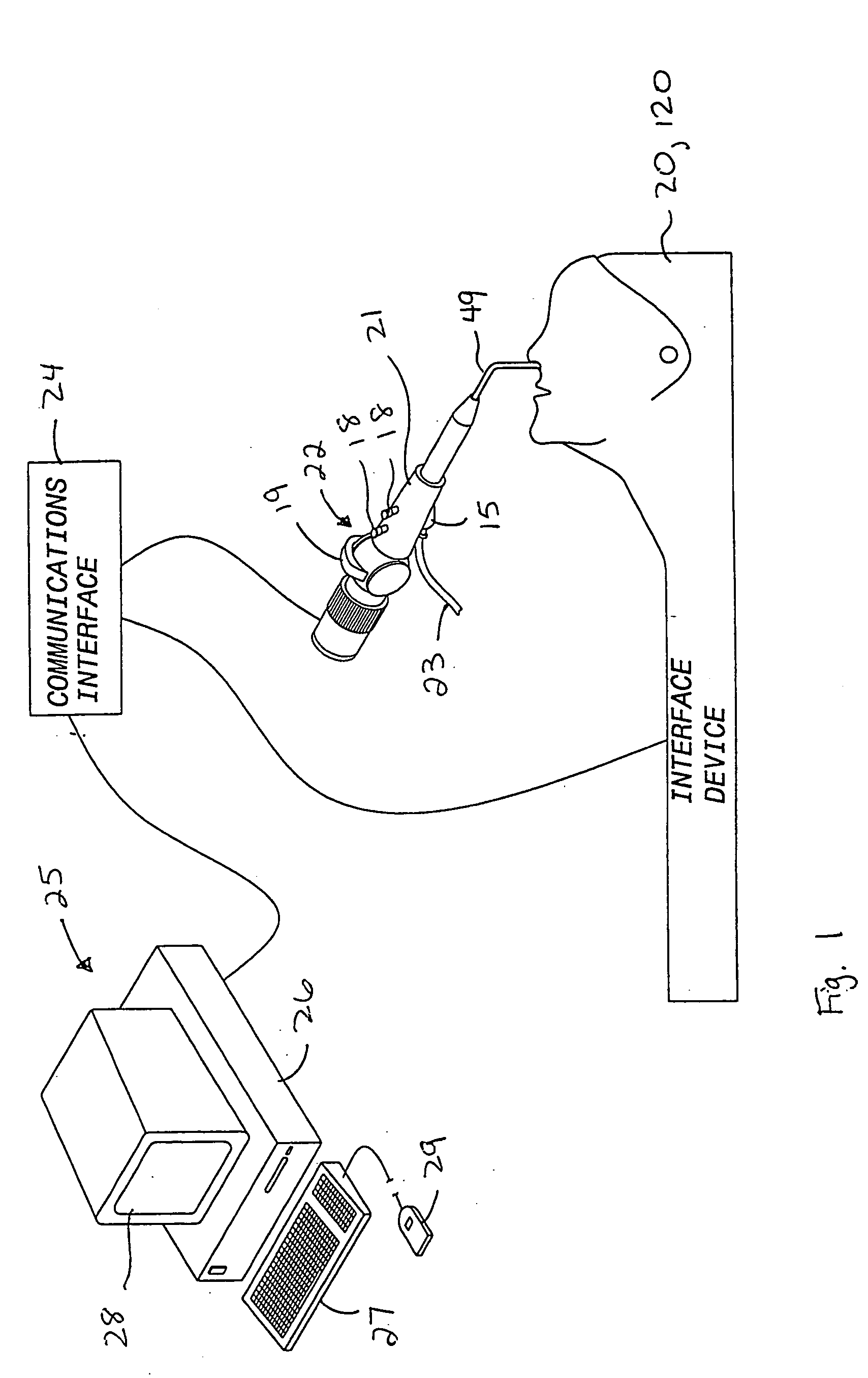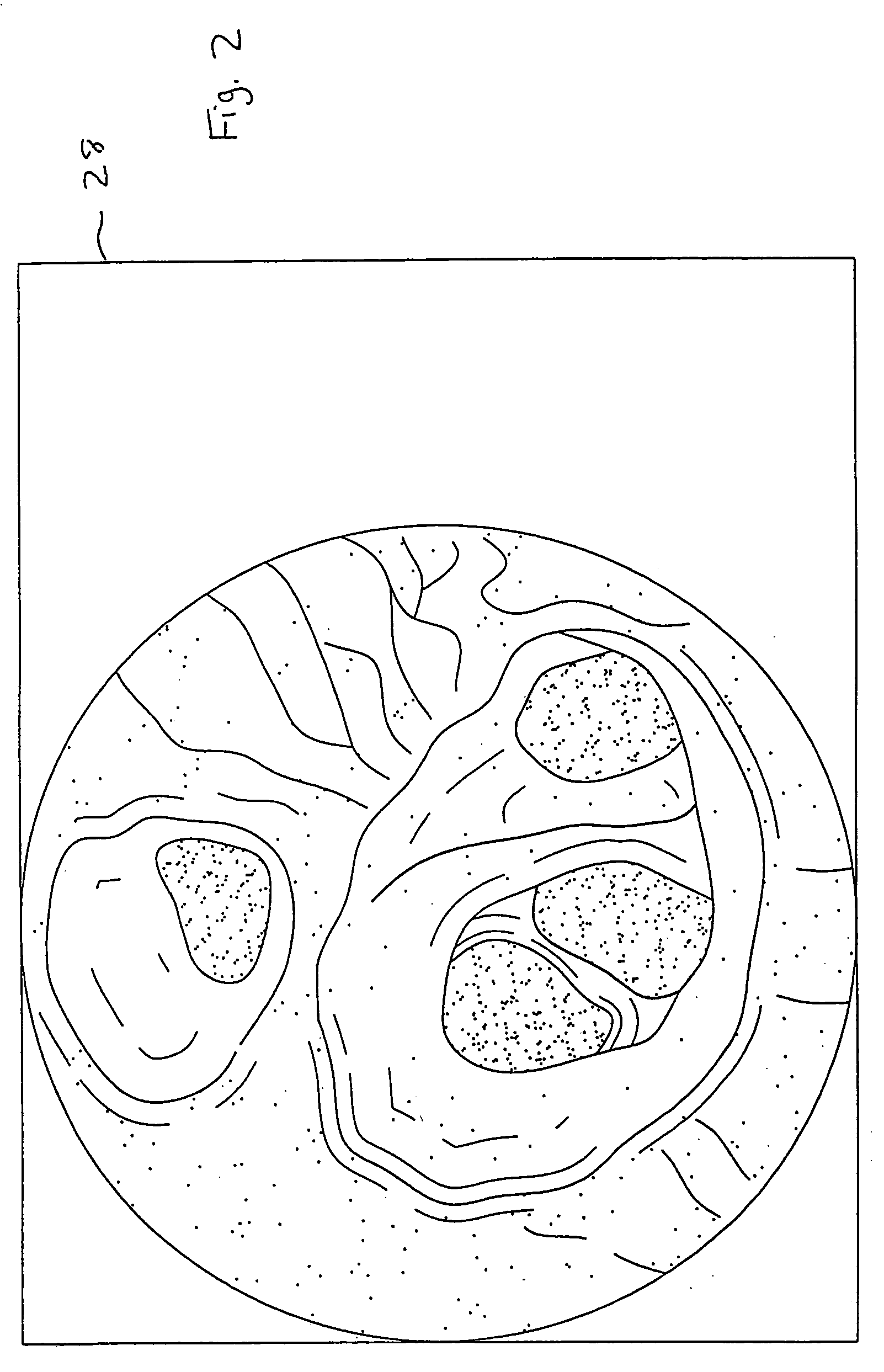Interface device and method for interfacing instruments to medical procedure simulation systems
a simulation system and interface device technology, applied in the field of interface devices, can solve the problems of limiting the number of physicians that may acquire sufficient experience to perform these types of procedures, limiting the training of a medical procedure, and limiting the practice of procedures to a particular time and location, so as to enhance the effect of realism
- Summary
- Abstract
- Description
- Claims
- Application Information
AI Technical Summary
Benefits of technology
Problems solved by technology
Method used
Image
Examples
Embodiment Construction
[0045] An overall system for simulating medical procedures, preferably endoscopic procedures such as bronchoscopy, laryngoscopy, gastroscopy, colonoscopy, sigmoidoscopy, arthroscopy, laparoscopy or ureteroscopy, is illustrated in FIG. 1. Specifically, the medical procedure simulation system includes a computer system 25, an interface device 20, an actual or mock endoscope 22 and a communications interface 24 for transferring signals between computer system 25, interface device 20 and actual or mock endoscope 22. Computer system 25 preferably includes a monitor 28, base 26 (e.g., including processor(s), memories and accompanying hardware), keyboard 27 and mouse 29, and is typically implemented by a conventional or commercially available workstation, such as those manufactured by IBM, Dell or Silicon Graphics, Inc. The computer system simulates, via software, an endoscopic or other medical procedure (e.g., an interventional radiology procedure), while displaying a simulated particular...
PUM
 Login to View More
Login to View More Abstract
Description
Claims
Application Information
 Login to View More
Login to View More - R&D
- Intellectual Property
- Life Sciences
- Materials
- Tech Scout
- Unparalleled Data Quality
- Higher Quality Content
- 60% Fewer Hallucinations
Browse by: Latest US Patents, China's latest patents, Technical Efficacy Thesaurus, Application Domain, Technology Topic, Popular Technical Reports.
© 2025 PatSnap. All rights reserved.Legal|Privacy policy|Modern Slavery Act Transparency Statement|Sitemap|About US| Contact US: help@patsnap.com



